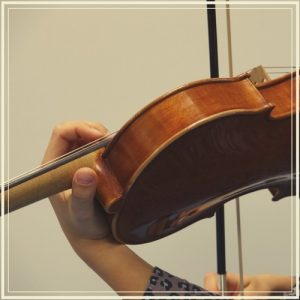How to deal with technical difficulties?
 Again and again, our students encounter technical difficulties when practicing their pieces. A certain passage just will not succeed; at a certain part of the piece the sound is not good; at another part the bow bounces unintentionally; a big interval in the tone sequence is out of tune; the vibrato sounds irregular; the chord sounds scratchy. There are many technical challenges that we, as teachers, face every day. When someone learns something new and wants to develop his skills, he – from time to time – comes to a limit that has to be overcome. The question is: As a teacher, how do I deal with these „challenges“ of my students? How can I help them to successfully overcome these limits?
Again and again, our students encounter technical difficulties when practicing their pieces. A certain passage just will not succeed; at a certain part of the piece the sound is not good; at another part the bow bounces unintentionally; a big interval in the tone sequence is out of tune; the vibrato sounds irregular; the chord sounds scratchy. There are many technical challenges that we, as teachers, face every day. When someone learns something new and wants to develop his skills, he – from time to time – comes to a limit that has to be overcome. The question is: As a teacher, how do I deal with these „challenges“ of my students? How can I help them to successfully overcome these limits?
Diagnostic view
First, in such a case, we need a „diagnostic view“. We need to find out exactly where the problem is situated: Is it a lack of pitch perception? Is the child able to imagine (to hear internally) the pitch of the note after the shift? Or is the student not familiar enough with the geography of the fingerboard? Is he able to locate the positions on the fingerboard? Is he aware of the sequence of half tone and whole tone steps of the passage? Is the left arm or the hand too tense when changing the position? Is the finger pressure too big? Is the hand- or finger position of the student inappropriate?
Is there a problem with bow change? Or with string crossings? Does the student know exactly which notes he has to play on which string during a fast passage? Can he adjust the string level with his bow arm? Is the wrist relaxed and flexible enough to perform fast and small string crossings? Or is there a coordination problem?
Isolate the problem
When we realize what is causing trouble, it is best to isolate the problem. Now it’s time for us teachers to build a creative strategy. It would be best if we could create a little exercise for just that problem at just this passage for just that student. Of course, there are tons of books with tons of exercises for every technical problem ever, from which we have learned so much, and which we all greatly appreciate. And it is precisely this knowledge that enables us as teachers to find a very individual solution for our student and his „challenge“ that is tailored precisely to his person and his current need. In this way he can improve his playing technique in a targeted manner and in a short time.
„Reinstall“ the new skills
Now it is about reinstalling the newly acquired skills in the passage of the piece of music. The best thing is to do this in small steps. First, slowly repeat the passage several times until everything works well and the student is happy with the sound, intonation, and expression. Then get in two bars before and play until two bars later. Repeat this extended passage several times until it sounds nice and all the playing movements work well. In the next step, you can already choose a larger section, and so on, until the student can make the whole piece sound beautiful and expressive and feel comfortable.
In this way, you can deal with every challenge of your students and lead them to a sense of achievement. If possible, treat only one difficulty after another, never all at once!
What to do if there are „too many“ challenges?
If you have the impression that there are too many difficulties at a time, then you may want to reconsider the selection of the piece. Then you might have chosen a piece which is too high from the difficulty level for this student at this time, overwhelming him at the moment. It is no shame to play another piece in between, and to put the „difficult“ one back on the program a little later, when the playing technique is a bit more mature.
Best Practice?
How to avoid overwhelming technical difficulties and possible frustrations? I want to encourage you to introduce and establish all playing techniques on the instrument as early as possible and then – in „small bites“ – to refine and develop more them and more. Small exercises – I mean short (at most two minutes) but very specific exercises that are practiced in each lesson (and of course also at home). For example: The students already know their way up to the 7th position on the fingerboard (from the little exercises) before they play a piece that demands position playing up to the 7th position.
What about making a list of „skills“ that you would like to practice regularly but briefly in each lesson with your students? You will see how positively this affects your students‘ playing technique!
How do you deal with technical difficulties of your students? Please feel free to write a comment! I would appreciate it very much!
Andrea Holzer-Rhomberg

Kommentare
How to deal with technical difficulties? — Keine Kommentare
HTML tags allowed in your comment: <a href="" title=""> <abbr title=""> <acronym title=""> <b> <blockquote cite=""> <cite> <code> <del datetime=""> <em> <i> <q cite=""> <s> <strike> <strong>